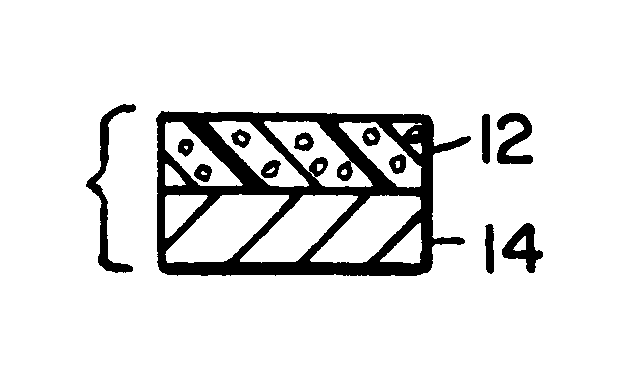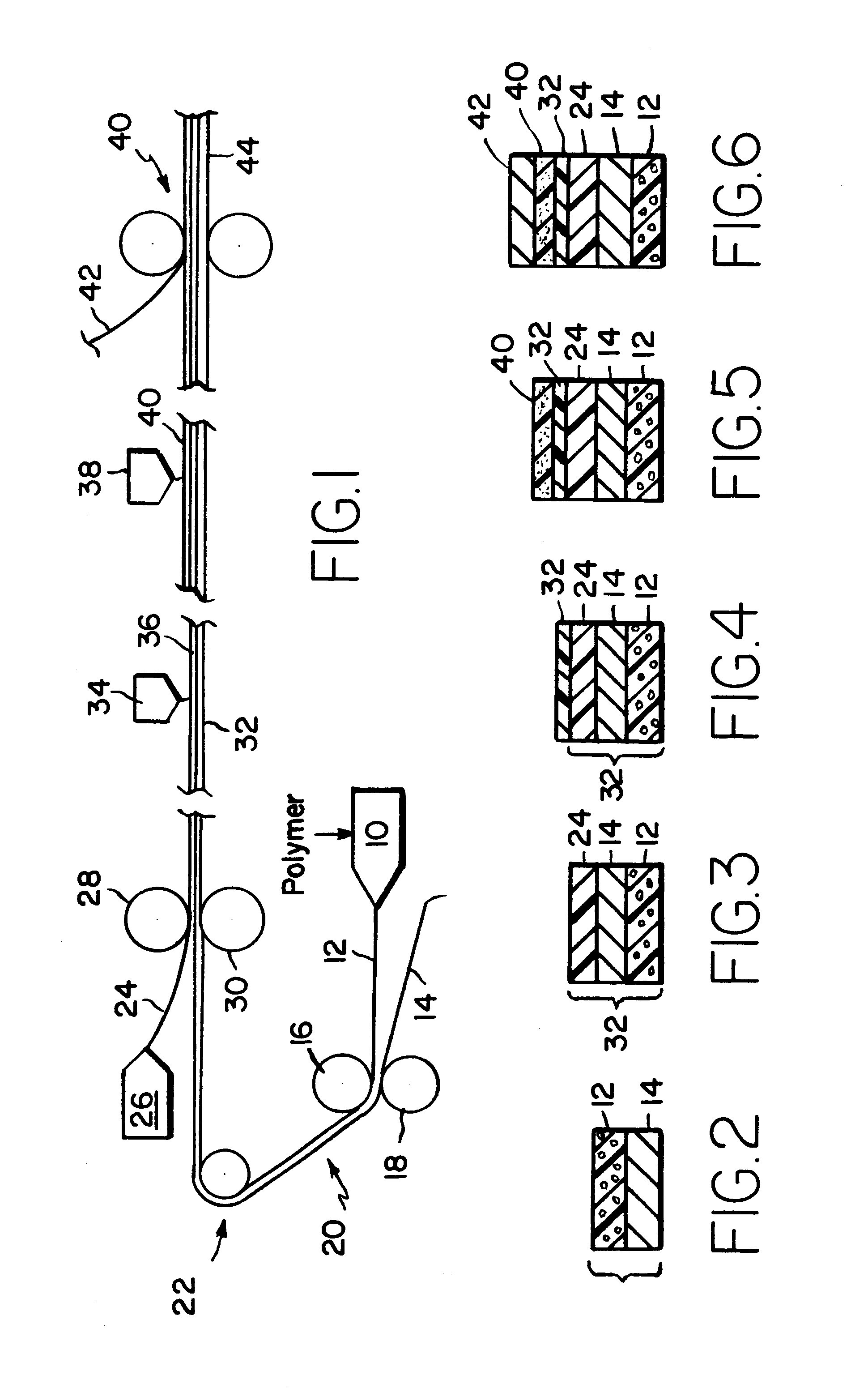Release liners for pressure sensitive adhesive labels
a technology for adhesive labels and release liners, which is applied in the direction of film/foil adhesives, cellulosic plastic layered products, synthetic resin layered products, etc. it can solve the problems of paper tissue absorbing water vapor and the liner tending to upcurl, tissue absorbing water vapor and the liner tending to downcurl, etc., to reduce the thickness of the final label and be less costly
- Summary
- Abstract
- Description
- Claims
- Application Information
AI Technical Summary
Benefits of technology
Problems solved by technology
Method used
Image
Examples
example 1
Referring to FIG. 1 a medium density polyethylene extrusion grade polymer (0.93-0.95 g / cc) having 25% by weight filler loading, specifically 25-50 micron diameter silicon / calcium glass beads, was charged to an extruder 10. The medium density polyethylene is formed by blending high density polyethylene (0.947-0.953 g / cc) with a low density polyethylene (0.907-0.928 g / cc) in a ratio of 2:1 by weight, HDPE / LDPE. A filled polymeric base layer 12 was extruded at a temperature of about 600.degree. F. and a thickness of one mil. A paper substrate 14, International Paper-Bastrop's 70# grade 0612 Reel Cote paper was nipped to the base layer 12 by a matte chill roll 16, 70.degree. F., and a drive roll 18 at a pressure of about 100 psi. Both surfaces of the paper 14 had previously been chemically treated with an aqueous solution of polyethyleneimine to improve the adhesion properties of the surfaces of the paper 14. The laminated base film 12 and paper 14 formed a laminate release liner base 2...
example 2
A release liner 32 was produced under the process conditions described for Example 1 except that the layer 12 was loaded, 25% by weight, with a combination of glass beads as described above and dolomite particles (calcium based agglomerates average 5 micron diameter) in a ratio of 50 / 50 by weight.
The roughness of the base layer 12, based on TAPPI T-538 om-96, 1996, for Examples 1 and 2 was 295 and 290 Sheffield units respectively.
There was no blocking exhibited by the base layer 12, for Examples 1 and 2, based on TAPPI UM-565, 1991.
The coefficients of static and kinetic friction based on TAPPI T-549 pm-90, 1990, were for Example 1 static 0.19 and kinetic 0.18 and for Example 2 static 0.16 and kinetic 0.19.
Referring to FIGS. 1, 5 and 6, label stock was made from the release liner 32 of Examples 1 and 2. A coater 38 applied a pressure sensitive adhesive 40, FLEXcon's V-38, to the coated release liner 32. Then polyvinyl chloride face stock 42, coated with a laser receptive primer to im...
PUM
| Property | Measurement | Unit |
|---|---|---|
| density | aaaaa | aaaaa |
| thickness | aaaaa | aaaaa |
| thickness | aaaaa | aaaaa |
Abstract
Description
Claims
Application Information
 Login to View More
Login to View More - R&D
- Intellectual Property
- Life Sciences
- Materials
- Tech Scout
- Unparalleled Data Quality
- Higher Quality Content
- 60% Fewer Hallucinations
Browse by: Latest US Patents, China's latest patents, Technical Efficacy Thesaurus, Application Domain, Technology Topic, Popular Technical Reports.
© 2025 PatSnap. All rights reserved.Legal|Privacy policy|Modern Slavery Act Transparency Statement|Sitemap|About US| Contact US: help@patsnap.com


